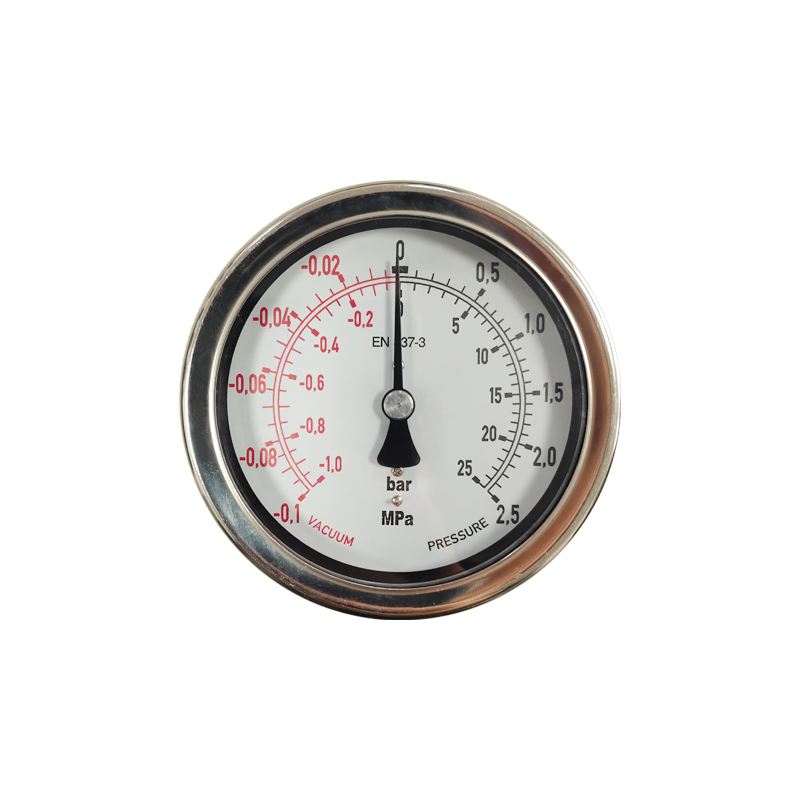
Oct . 14, 2024 00:42 Back to list
Advanced Cryogenic Differential Pressure Gauges for Precise Measurement and Control Solutions
Understanding Cryogenic Differential Pressure Gauges
In the realm of precision measurement and control, cryogenic differential pressure gauges play a pivotal role, especially in industries where extremely low temperatures are commonplace. These specialized instruments are designed to measure the pressure difference between two points in systems involving cryogenic fluids, including liquefied gases such as nitrogen, oxygen, and natural gas. The development of these gauges has made significant contributions to the safety, efficiency, and reliability of processes in various applications, from aerospace to medical technology.
What is a Cryogenic Differential Pressure Gauge?
A cryogenic differential pressure gauge is a device that measures the difference in pressure between two points, typically in cryogenic systems. At cryogenic temperatures, materials and fluids behave differently than they do at room temperature. This necessitates highly specialized equipment that can operate effectively in such conditions. These gauges are usually constructed with materials that can withstand extreme cold, ensuring durability and accuracy in measurements.
Applications of Cryogenic Differential Pressure Gauges
Cryogenic differential pressure gauges are crucial in a variety of industries. In the aerospace sector, these gauges are used in rocket propulsion systems, where precise control of cryogenic fuels is vital for performance and safety. Similarly, in the medical field, they monitor pressure in systems that handle cryogenically stored samples, ensuring integrity during processes such as cryopreservation.
Additionally, these gauges find applications in the liquefied natural gas (LNG) industry. They help track pressure differences in the transport and storage of LNG, which is critical for safety and operational efficiency. Any deviation in expected pressure readings could indicate a significant issue, such as a leak or block in the system, making these instruments essential for maintaining optimal operational conditions.
Design and Technology
The design of cryogenic differential pressure gauges must consider the unique challenges posed by low temperatures. Typically, these gauges employ either mechanical or electronic sensing elements. Mechanical designs might use bellows or diaphragm structures that expand or contract in response to pressure changes. These components must be made from materials that can endure the extreme cold without becoming brittle or losing their elastic properties.
cryogenic differential pressure gauges products

On the other hand, electronic cryogenic differential pressure gauges utilize advanced technology such as piezoresistive or capacitive sensors. These sensors can provide highly accurate measurements even in fluctuating conditions. The electronics are usually housed in thermally insulated enclosures to protect them from the cold and ensure accurate readings.
Accuracy and Calibration
When dealing with cryogenic applications, accuracy is paramount. Differential pressure gauges must be calibrated correctly to provide reliable data. Regular maintenance and recalibration are essential to maintain the accuracy of these instruments, particularly in demanding environments. Factors such as temperature fluctuations, vibrations, and the operating environment can impact the performance of the gauge; thus, adherence to strict calibration protocols is strongly advised.
Challenges in Measurement
One of the primary challenges faced by cryogenic differential pressure gauges is thermal conductivity. At low temperatures, conventional materials can conduct heat differently, potentially affecting gauge performance. Additionally, the gauge's response time to pressure changes can be impacted by the low viscosity of cryogenic fluids. As a result, manufacturers of these gauges often invest in research and development to create more effective designs and materials that mitigate these challenges.
Future Trends
With the ongoing advancements in technology, the future of cryogenic differential pressure gauges looks promising. Innovations in materials science and sensor technology will likely lead to even more robust and accurate gauges. Additionally, the demand for energy-efficient solutions in various industries will drive the development of more sophisticated measuring instruments that can better handle the intricacies of cryogenic environments.
In conclusion, cryogenic differential pressure gauges are indispensable tools in a wide array of applications where precise pressure measurement is critical. Understanding their design, function, and applications helps industries operate more effectively and safely, paving the way for future innovations in this essential field of measurement technology. As industries continue to grow and evolve, these gauges will remain at the forefront, crucial for optimizing processes and safety in cryogenic environments.
-
Top Diaphragm Seal Pressure Gauge Suppliers Precision & Durability
NewsMay.29,2025
-
Ashcroft Diaphragm Pressure Gauges High Accuracy & Durable Design
NewsMay.29,2025
-
WIKA Diaphragm Seal Pressure Gauges Corrosion-Resistant & Durable
NewsMay.29,2025
-
Precision Differential Pressure Gauge Assembly Reliable & Customizable Solutions
NewsMay.29,2025
-
WIKA Sanitary Diaphragm Pressure Gauge High Precision & Durability
NewsMay.29,2025
-
HD Fire Pressure Gauges High Accuracy & Durable Solutions
NewsMay.28,2025
